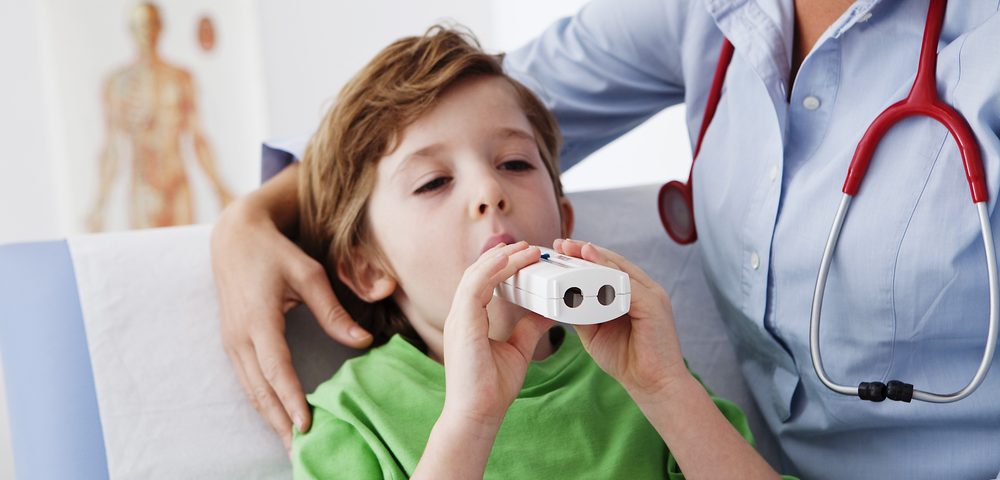A high incidence of bronchiectasis was found among children with severe asthma in a study conducted in the U.K.
The study also revealed that performing computed tomography (CT) scans in children with severe asthma might not change the course of treatment, or suggest better management strategies. Therefore, doctors should carefully consider whether the exam is necessary, and what benefits it might bring, the researchers suggest.
The study, “High prevalence of bronchiectasis on chest CT in a selected cohort of children with severe Asthma,” was published in the journal BMC.
Chest CT scans are recommended for adults and children who present severe asthma. CT scans allow clinicians to diagnose secondary conditions, and to identify prognostic markers in adults. However, the importance of this imaging exam in children is not well known.
Now, researchers in the U.K. reviewed CT scan results of children with severe asthma to determine if they are correlated with lung function parameters, and could suggest a better line of treatment.
The team reviewed CT scans and clinical data of 30 children, ages 5 to 16 (median age of 12 years), treated from 2006 to 2011 at the Leicester difficult asthma clinic (DAC). The results of the asthma group were compared with those of eight non-asthmatic patients, around the same age, who underwent CT imaging for cancer monitoring.
Results showed that, overall, 87% of children with asthma showed at least one abnormality in their lung structure in CT scans. The most common was thickening of the bronchial walls — the bronchi are the tubes that conduct air to the lungs — present in 80% of patients. A majority of the children (60% of patients) were found to have air trapping due to airway obstruction. None of these symptoms were observed in non-asthmatic children.
A similar percentage of asthmatic and non-asthmatic children had their airways filled with mucus, showing that the symptom is non-specific to asthma. The researchers noted, however, that cancer patients may have more mucus than the general population because they are more prone to chest infections.
Importantly, the investigators identified bronchiectasis in 27% of the asthma patients. Most of these children with bronchiectasis also had bronchial wall thickening, air trapping, or both.
Furthermore, older asthma patients were found to be more prone to have bronchiectasis — 13.9 versus 11.5 years in those without bronchiectasis. A direct correlation was found between increasing age, and increasing bronchiectasis severity.
“Although we did find a high proportion of DAC patients with BE [bronchiectasis], it is unclear whether BE observed in asthma patients represents a separate condition or natural progression of severe disease,” the researchers said.
Spirometry results — a test that measures lung capacity and function — were not correlated to any CT anomalies, suggesting that early structural changes in the lung detected by CT might not impact the respiratory function.
Children with CT abnormalities tended to have more immune cells and markers of allergy in their sputum, but the differences were not statistically significant, the study found.
Overall, the team concluded that there was “a high prevalence of bronchiectasis amongst [their] selected cohort of children with severe asthma,” affecting “approximately one third of children.”
“This has not been reported by previous paediatric studies,” the researchers said.
“Abnormal CT findings are highly prevalent in nearly all our selected paediatric asthma population but these were not associated with lung function deficit,” they added.
The team highlighted that the results of the CT scans did not provide any relevant information leading to a change in the treatment or management of patient care. Therefore, they suggested that “consideration needs to be given as to how CT chest imaging is likely to change management prior to requesting the investigation.”
The researchers noted that CT imaging in children is not risk-free. CT scans have been associated with a low increase in the risk of future cancer.
“The decision of when to proceed to CT imaging remains unclear, and needs to be made on the balance of radiation risk versus potential treatment benefits for the patient. A CT scan should only be proposed if it changes the management of the patient, or in cases where an alternative diagnosis is suspected,” the team concluded.

